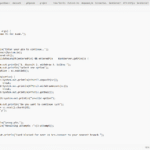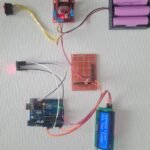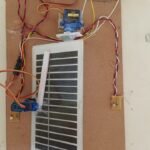- Home
- Candidates
- Developer
- Nandini


Nandini
About me
Enthusiastic and dedicated recent graduate with a strong foundation in engineering principles and a passion for learning new technologies. Eager to contribute to a team, apply theoretical knowledge in practical environments, and build a successful career while adding value to the organization.
Video
Skills
Work Experience
Cloud Application Developer Intern
Rooman Technology
September 1, 2024
-
February 28, 2025
Completed an internship as a Cloud Application Developer at Rooman Technology, gaining hands‑on experience in building and deploying cloud‑based applications. Worked with cloud platforms, implemented REST APIs, and collaborated with a team to deliver scalable and secure solutions. Developed strong technical and problem‑solving skills in cloud computing and application development.
Analyst Intern
Helioustin
June 1, 2025
-
Present
Completed an internship as an Analyst Intern at Helioustin, gaining hands‑on experience in data analysis, market research, and business process optimization. Developed analytical and problem‑solving abilities by working with cross‑functional teams to gather, interpret, and present actionable insights.
Education
B.E (ECE)
Undergraduate
January 1, 2021
-
May 31, 2025
Completed a Bachelor of Engineering in Electronics and Communication (ECE), gaining a strong foundation in electronics, telecommunications, embedded systems, digital signal processing, programming, technical knowledge and Cloud. Developed technical, analytical, and problem‑solving skills through coursework, laboratory sessions, and projects.
12th
PUC
June 1, 2020
-
December 31, 2020
Completed 12th Grade (PUC) with a focus on Physics, Chemistry, Mathematics, and Biology (PCMB), gaining a strong foundation in the core sciences and analytical thinking. Developed problem‑solving and logical reasoning abilities through coursework and practical experiments.
10th
SSLC
June 1, 2018
-
May 31, 2019
Completed 10th Grade (SSLC) with a general curriculum, gaining a strong academic foundation in core subjects and developing essential learning, communication, and problem‑solving skills.
Projects

Simple ATM Simulation System.
The Simple ATM Simulation System is a Java-based console application that mimics basic ATM functionalities like PIN authentication, deposits, withdrawals, and balance inquiries. Users must enter a 4-digit PIN to access their account, with a maximum of three attempts before getting locked out. Deposits require a minimum of ?100, and withdrawals must maintain a ?500 minimum balance. The system ensures secure transactions using Java’s object-oriented principles, loops, and conditional statements, making it an excellent project for learning core banking operations in Java.
View Project
Smart Terahertz Sensor for Reproductive Hormone Detection with Machine Learning Insights
Smart terahertz (THz) sensors have shown great potential for reproductive hormone detection due to their high sensitivity and non-invasive nature. Recent advancements incorporate machine learning to enhance detection accuracy and data analysis. Photonic crystal fiber (PCF) sensors, specifically designed for THz applications, have been developed to detect hormones like progesterone and estradiol by leveraging unique molecular interactions with THz waves. Additionally, metamaterial-based sensors combined with THz time-domain spectroscopy (THz-TDS) enable qualitative and quantitative detection of reproductive hormones, aiding in applications such as estrus identification in dairy cows. Machine learning algorithms further optimize these sensors by improving pattern recognition, reducing noise, and increasing specificity, making them a promising tool for medical diagnostics and agricultural applications.
View Project
Sun Tracking Solar Panel with Auto Dust Cleaning System
A sun-tracking solar panel with an automatic dust cleaning system enhances solar energy efficiency by aligning the panel with the sun and keeping the surface clean. Fixed panels lose efficiency as the sun moves, but sun-tracking systems adjust the panel’s position throughout the day, ensuring optimal exposure. Single-axis trackers move east to west, while dual-axis trackers adjust both horizontal and vertical angles for higher accuracy. Sensors like Light Dependent Resistors (LDRs) detect sunlight intensity and send data to a microcontroller, which controls servo or stepper motors to reposition the panel, boosting energy output by 20% to 40%. However, dust and debris can block sunlight, reducing efficiency. Automatic dust cleaning systems, including brush-based, water jet, electrostatic, and vibration-based methods, prevent dust buildup and operate either on a schedule or based on sensor detection.
View ProjectHonors & awards
Distinction Student
January 1, 2020
Completed 10th Grade (SSLC) with distinction, demonstrating academic excellence and a strong foundation in core subjects. Developed discipline, attention to detail, and a commitment to learning.
Review
0
Base on 0 reviews
Working attitude
Progressive working attitude
0
Team work
0
Good teamwork spirit
Skill & Experience
0
Skills and experience meet well
Offered Salary
0
Suitable salary
Login
to review














